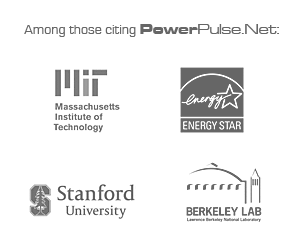Flat Coil Planar Magnetics in a Distributed Power Architecture

Since it first began to replace the central power source in the 1980s, distributed power architecture (DPA) has been implemented in a wide variety of complex electronic systems for the datacom, industrial automation and control, aeronautics, and robotics industries. Planar magnetics has been primarily implemented as a high power (>100W) low profile (< 10mm) solution for medium to low voltage conversions (e.g. the intermediate bus converter) because of the current handling capabilities of the planar windings.
Since it first began to replace the central power source in the 1980s, distributed power architecture (DPA) has been implemented in a wide variety of complex electronic systems for the datacom, industrial automation and control, aeronautics, and robotics industries. Planar magnetics has been primarily implemented as a high power (>100W) low profile (< 10mm) solution for medium to low voltage conversions (e.g. the intermediate bus converter) because of the current handling capabilities of the planar windings. This editorial discusses recent trends that are driving new opportunities for planar transformers and cost effective solutions. A new generation of product offerings is presented that both increases the technical performance compared to the existing offering and reduces the price. Finally, further development activity is outlined which will further reduce the price and increase the power capability and functionality of new planar solutions.
The fundamental blocks of the DPA are shown in the diagram in Figure 1. Emerging demands have driven the development of a new range of magnetics. The DPA needed to adjust to the requirements of more complex and power hungry loads. DSPs, FPGAs, and ASICs requiring careful load monitoring and power sequencing, have led to a wider implementation of point-of-load regulators with digital controllers to facilitate the load management. Increasing current levels have driven the requirement for higher efficiency inductors. The reader is referred to http://www.pulseelectronics.com/download/3789/g044 for more information. A direct consequence of this is a simplification of the intermediate bus converter (IBC). Previously, these tended to be complex multiple output modules to provide several voltage rails. These are now being replaced with single output converters, with the strong trend to implement these as an embedded solution. However, the increasing power requirements and the height restrictions demand low profile, high efficiency, and cost-effective solutions. Conventionally wound magnetics may still satisfy the power requirements up to 100W. Above 100W these solutions become quite bulky.
Planar magnetics achieves higher power in a lower profile by replacing the cores and windings of conventional wound magnetics with flatter alternatives. Traditionally, planar cores have been used with multi-layer PCBs for the medium voltage, medium current primary winding, and copper plates for the low voltage, high current secondary winding of the IBC transformer. The PCB is the most significant cost factor; its cost is linked directly to its size and the manufacturing volume. There is limited design flexibility, and new tooling is required for each winding variation. While some economies of scale have been achieved for smaller planar sizes, the cost increases rapidly for higher currents (more PCB layers) and larger platforms (more PCB area). A cost-effective alternative can be made by replacing the multilayer PCB winding with a flat coil winding, reducing the price by approximately 20%. The copper fill factor of this technology is twice that of a PCB, so the direct current resistance (DCR) of the primary winding is reduced by 50% in the new generation series. This increases the power rating by 20% in the new size and pin compatible standard series. Eliminating the cost and time to fabricate PCBs for new winding arrangements, the flat coil planar transformer has the additional advantages of flexibility and speed to prototype custom variations.
For power levels up to ~ 150W, the forward converter topology was commonly selected and the conventional planar construction has been an effective transformer solution. However, for the next power range, other topologies, such as the bridge converter, are generally chosen. These may require center taped windings, and with current conduction in the windings only during certain periods of the switching cycles, the coupling between windings becomes a critical design aspect. Traditional multilayer PCB windings with up to 8 consecutive winding layers give rise to high leakage inductance, producing unacceptably high voltage spikes and snubber circuit losses. The multilayer PCB can be replaced with a reduced number of flat coil winding layers connected in series. This provides immediate benefits by reducing the AC proximity effect on copper losses. In addition, more winding segments and selective coupling between simultaneously conducting windings can be implemented to reduce the leakage inductance. This improved interleaving capability has been demonstrated to increase the PSU efficiency on high power systems by 2%.
The manual pinning and soldering of the current planar construction is a second significant cost factor. To address this, a new process that greatly reduces the assembly time is being developed. A pinned header allows the individual winding elements to be quickly stacked and terminated by solder immersion. A modification to the pad layout for the flat pins of the pinned header is required if replacing a round pin of an older generation planar transformer. However, with a 20% further price reduction compared to older versions, the newer solution is recommended for new designs. A new series of flat coil planar transformers is being developed that has a larger platform extending the power capability to 500W. See Figure 2. Further information on available platforms can be found at http://www.pulseelectronics.com/file.php?id=3837
Market needs are continuing to be addressed with the ongoing development of planar platforms and winding technologies. New products that are drop-in replacements for older transformers offer further price reductions. The current development roadmap includes optimized core designs and pushing the power capability up to 1KW, as well as an innovative winding technology to minimize leakage inductance for higher power transformer design and higher levels of isolation.
























